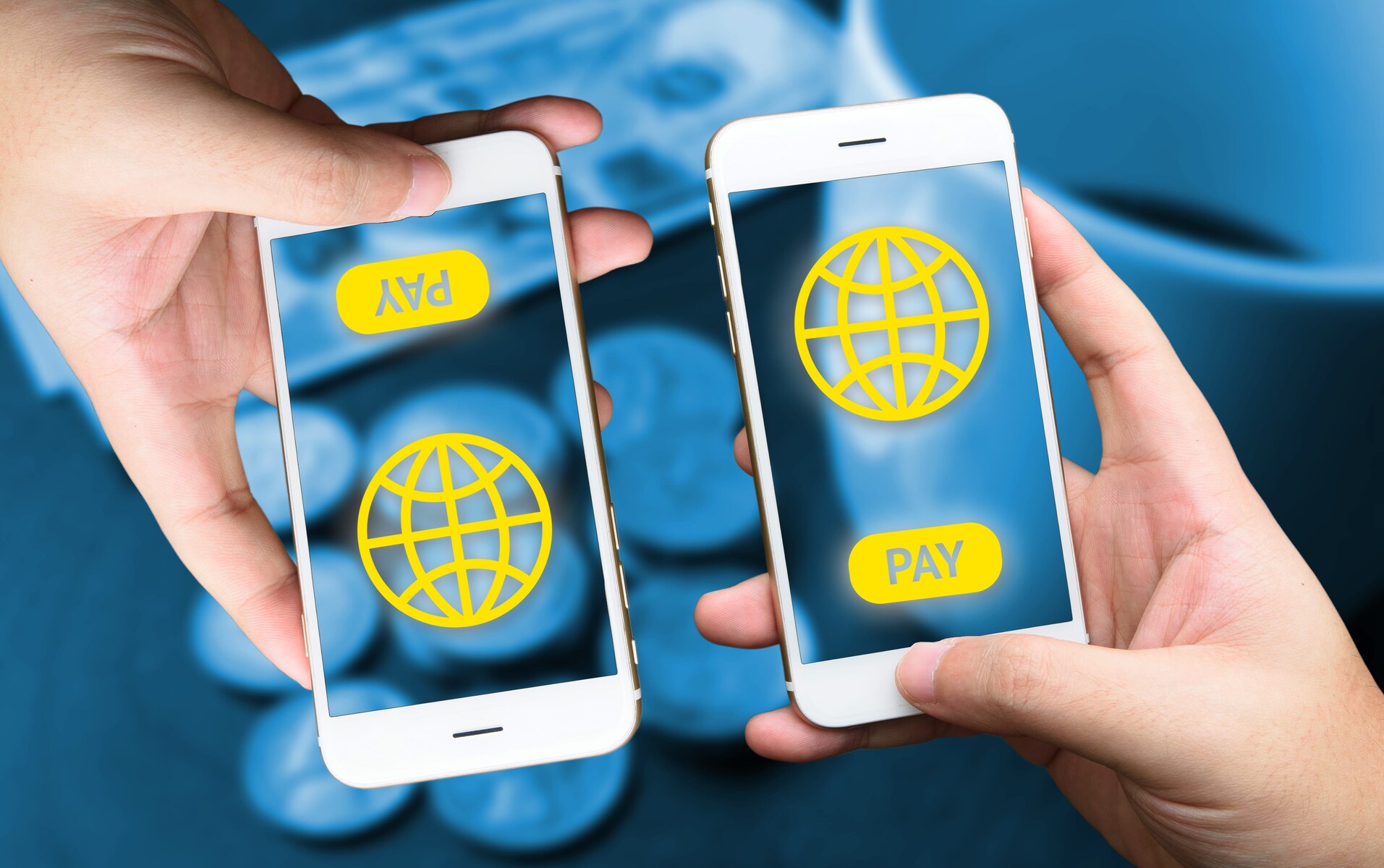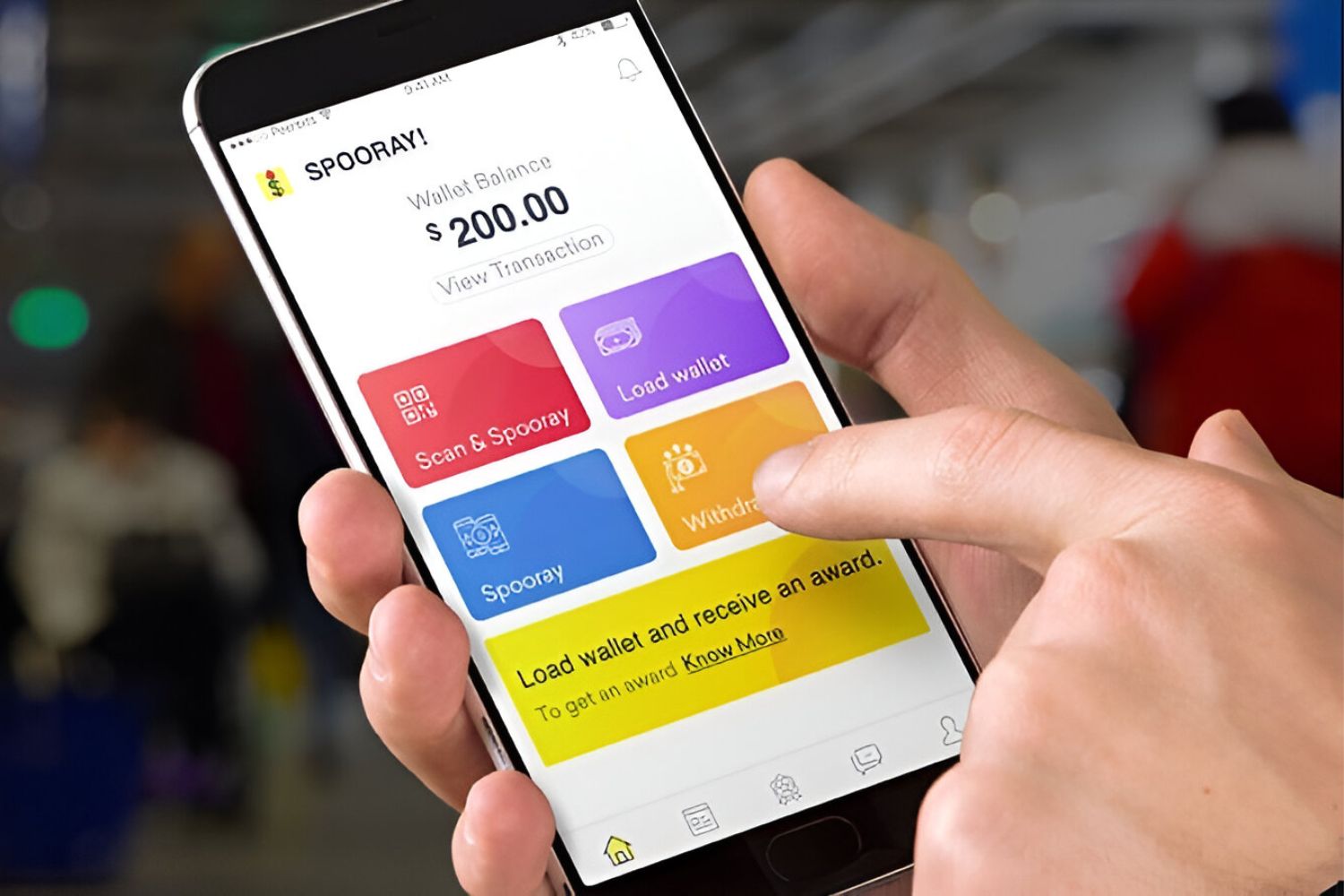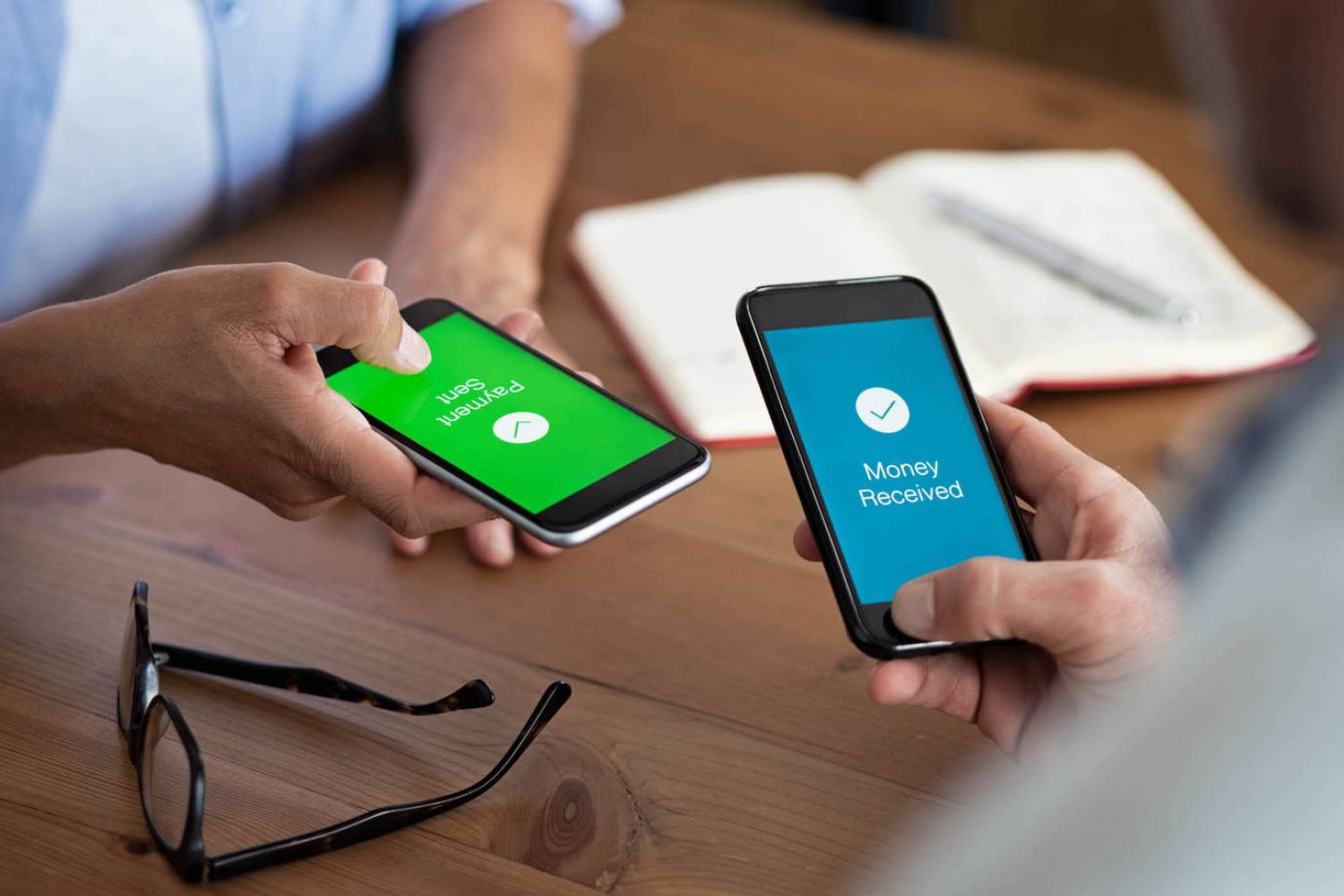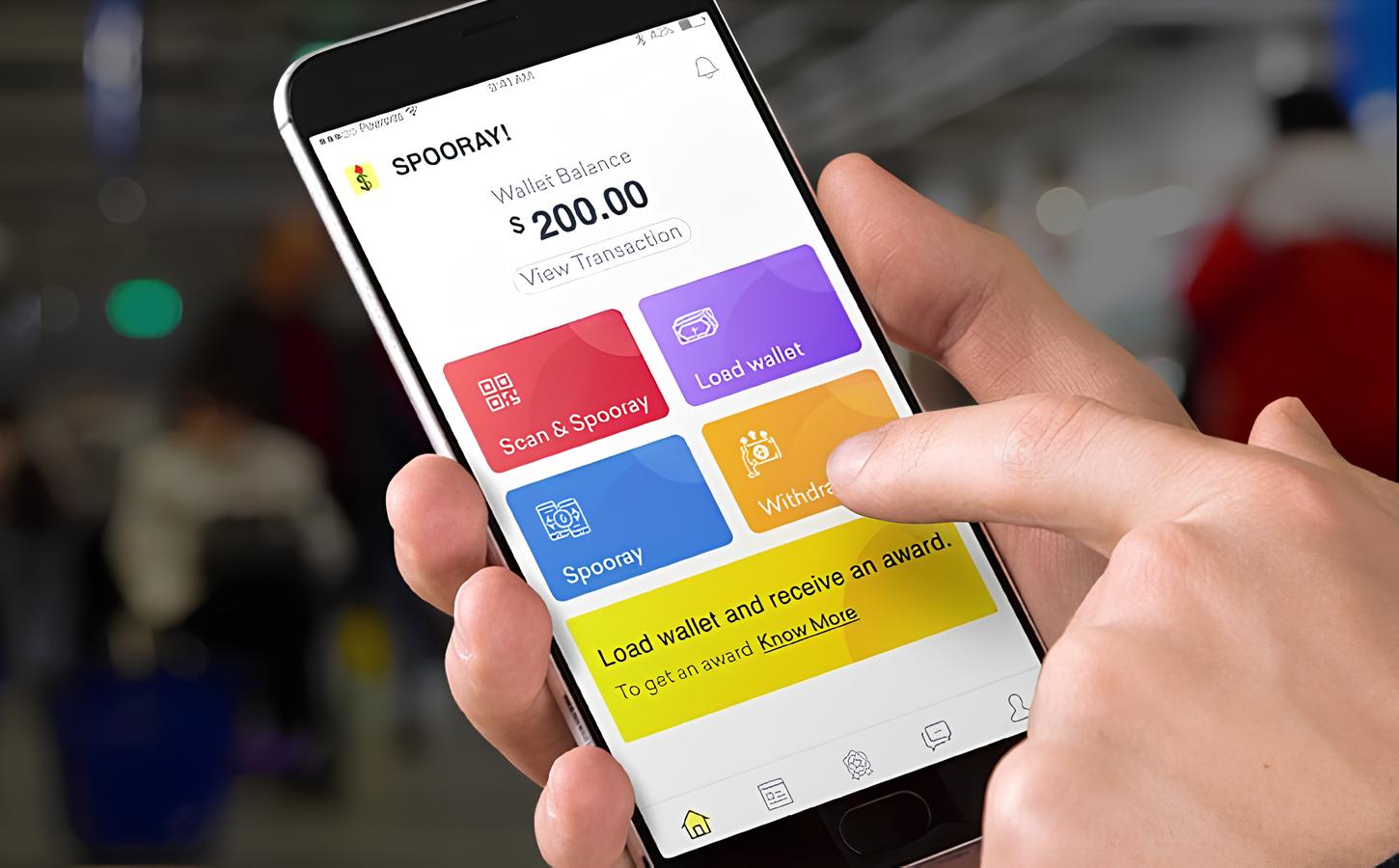Introduction
Peer-to-peer (P2P) payment services have become increasingly popular in recent years, providing a convenient way to transfer money between individuals. Whether you need to split a bill with friends, send money to family, or pay for a service, P2P payment platforms offer a quick and hassle-free solution.
However, in the fast-paced world of digital transactions, mistakes can happen. It’s not uncommon for recipients to accidentally send money to the wrong person, causing panic and anxiety about how to recover the funds. If you find yourself in this unfortunate situation, it’s important to take prompt action to increase your chances of retrieving the money.
In this article, we will explore the steps you can take to get your money back if you send a P2P payment to the wrong person. From contacting the recipient to disputing the transaction with your payment service provider, we’ll cover the essential strategies you can employ to rectify the situation.
While we will provide you with valuable advice and guidance, it’s worth noting that the options available to you may vary depending on the specific P2P payment service you use and the circumstances surrounding the transaction. It’s always wise to familiarize yourself with the terms and conditions of your chosen platform to understand their dispute resolution process.
Now, let’s delve into the steps you can take to recover your money if you send a P2P payment to the wrong person.
How P2P Payments Work
P2P payment services work by facilitating the transfer of funds directly between individuals, eliminating the need for traditional methods like cash or checks. These platforms act as intermediaries, allowing users to link their bank accounts, credit cards, or other payment methods to their profiles.
When making a P2P payment, you typically initiate the transaction through a mobile app or website, specifying the recipient’s details and the amount to be transferred. The platform securely processes the payment by encrypting the information and verifying the sender’s identity.
Once the payment is authorized, the P2P service provider debits the funds from your account and initiates the transfer to the recipient. In most cases, the recipient receives a notification and can access the funds directly in their own P2P account. From there, they can choose to keep the money within the platform or transfer it to their linked bank account.
One of the key advantages of P2P payments is the speed at which transactions can be completed. Unlike traditional bank transfers or checks, which can take days to clear, P2P payments can often be processed almost instantly. This convenience has made P2P payment services popular for a wide range of personal and business transactions.
It’s important to note that while P2P payments can be a convenient way to send money, they also come with certain risks. In particular, the instant nature of these transfers means that once the funds are sent, they are difficult to recall or reverse.
In the following sections, we will discuss what steps you can take if you mistakenly send a P2P payment to the wrong person and how to increase your chances of recovering the funds.
What to Do If You Send Money to the Wrong Person
Realizing that you have sent money to the wrong person can be a distressing situation. However, there are steps you can take to increase the chances of recovering the funds:
- Contact the recipient: The first step is to reach out to the recipient and politely explain what happened. It’s possible that they may be willing to refund the money if they haven’t already used it. Provide them with the necessary details of the transaction and request that they return the funds. While this approach may depend on the recipient’s willingness to cooperate, it’s worth attempting as a first step.
- Contact your payment service provider: If you are unable to resolve the issue directly with the recipient, contact your P2P payment service provider. Most platforms have customer support channels through which you can report an incorrect transfer. Provide them with all the relevant transaction details, including the recipient’s information, and explain the situation in detail. The payment service provider may assist in mediating the issue and potentially reversing the transfer if certain conditions are met.
- Review their terms of service and dispute process: Familiarize yourself with the terms of service provided by your P2P payment provider. Look for information on dispute resolution procedures and any policies related to incorrect transfers. Understanding the steps and requirements involved can help you navigate the process more effectively.
- Contact your bank: If the P2P payment provider is unable to resolve the issue, consider contacting your bank. Depending on the circumstances, they may be able to assist with reversing the transaction or offering guidance on the next steps to take.
- File a complaint with the Consumer Financial Protection Bureau (CFPB): If all else fails and you believe you’ve exhausted all available options, you can submit a complaint to the CFPB. This government agency handles consumer financial complaints and may be able to provide assistance or direct you to the appropriate regulatory authority.
- Take legal action: In extreme cases where significant amounts of money are at stake, you may have to consider taking legal action. Consult with a legal professional to understand your rights and options for recovering the funds. Keep in mind that legal proceedings can be time-consuming and costly, so it’s important to carefully weigh the potential outcomes.
Remember, the actions you take and the success of recovering your money will depend on various factors, including the policies and procedures of your chosen P2P payment platform. It’s important to act swiftly and maintain open communication with all relevant parties involved to maximize your chances of a positive outcome.
Contact the Recipient
One of the first steps you should take if you send money to the wrong person is to reach out to the recipient directly. While it may seem daunting, contacting the recipient to explain the situation can sometimes lead to a resolution.
Here are some tips for contacting the recipient:
- Remain calm and polite: It’s essential to approach the conversation with a calm and polite demeanor. Accidents happen, and it’s important not to escalate the situation by becoming confrontational or aggressive. Be respectful and explain the mistake that occurred.
- Provide all necessary details: When communicating with the recipient, make sure to provide them with all the relevant details of the transaction. Include information such as the date, time, amount, and any other identifying information that can help verify the transfer. The more information you provide, the clearer the picture you can paint for the recipient.
- Ask for a refund: Politely request that the recipient refund the money. It’s possible that they may not have used the funds yet or may be understanding of the situation. While they are not obligated to return the money, explaining the mistake and requesting a refund may encourage their cooperation.
- Keep records of communication: Throughout your communication with the recipient, keep detailed records of the conversations, including dates, times, and any agreements or promises made. This documentation can be useful in case you need to escalate the issue or seek assistance from your P2P payment provider.
However, it’s important to acknowledge that contacting the recipient does not guarantee a positive outcome. They may refuse to refund the money or may not respond to your attempts to get in touch. In such cases, you will need to explore other options to recover your funds.
Remember to remain patient and persistent throughout the process. While contacting the recipient directly may not always result in a favorable resolution, it’s a crucial step to take before moving forward with other dispute resolution methods.
Contact Your Payment Service Provider
If you are unable to resolve the issue of sending money to the wrong person directly with the recipient, the next step is to reach out to your P2P payment service provider. Most reputable platforms offer customer support channels that can assist you in resolving transaction-related problems.
Here’s what you can do when contacting your payment service provider:
- Gather transaction details: Before reaching out to customer support, gather all the necessary transaction details. This includes the date, time, and amount of the transfer, as well as any relevant information about the recipient. Having this information readily available will help customer support representatives better assist you.
- Use the appropriate communication channel: Check the payment service provider’s website or app for the designated channels for customer support. This may include phone, email, or live chat. Choose the most convenient method for you, considering factors such as response time and availability.
- Explain the situation clearly: When contacting customer support, clearly explain the situation and provide all the necessary details. Be concise yet thorough in describing the error and the steps you have taken thus far to resolve the issue. Attach any relevant documentation or screenshots that can support your claim.
- Follow up if needed: If you don’t receive a satisfactory response or resolution from the initial contact, don’t hesitate to follow up with your payment service provider. Persistence is key in resolving issues, and escalating the matter can help draw attention to your case.
- Be patient: Keep in mind that customer support teams may require some time to investigate the issue and provide a resolution. While it can be frustrating to wait, being patient and cooperative during the process will facilitate a smoother resolution.
It’s important to note that the specifics of the resolution process may vary depending on the payment service provider. Some platforms may have specific procedures and policies for handling incorrect transfers. Familiarize yourself with your provider’s terms of service and dispute resolution process to understand the options available to you.
Remember to document all interactions and communications with your payment service provider. Keep records of date, time, and content of conversations or emails. This documentation can prove valuable if you need to escalate the issue or provide evidence of your attempts to resolve the problem.
Contacting your payment service provider is a crucial step in the process of recovering your money. Their expertise and resources can greatly assist you in resolving the issue and potentially reversing the transaction.
Review their Terms of Service and Dispute Process
When faced with the situation of sending money to the wrong person through a P2P payment service, it is essential to review the terms of service and dispute process provided by your payment service provider. Understanding these guidelines will help you navigate the resolution process effectively.
Here are some important steps to take when reviewing the terms of service and dispute process:
- Access the terms of service: Locate and carefully read the terms of service provided by your payment service provider. These terms outline the rules and regulations governing the use of their platform, including dispute resolution procedures.
- Focus on dispute resolution: Pay close attention to the section dedicated to dispute resolution. Look for information on how to report an incorrect transfer, the timeframe for filing a dispute, and any specific requirements or documentation needed.
- Note any limitations or restrictions: Take note of any limitations or restrictions outlined in the terms of service. Some payment service providers may have specific conditions under which they can assist with disputing a transaction or reversing the transfer.
- Understand the dispute process: Familiarize yourself with the steps involved in the dispute process. Most providers require you to submit a written explanation of the issue, accompanied by supporting documentation. Make sure you understand the timeline for resolution and any additional actions you may need to take.
- Follow the instructions: When filing a dispute, carefully follow the instructions provided by the payment service provider. Failure to adhere to their specified process may result in delays or the rejection of your claim.
- Keep records of communication: Throughout the dispute process, maintain records of all communication with the payment service provider. Save email exchanges, take screenshots of online chats, or make note of phone conversations, including dates, times, and the names of customer support representatives you spoke with.
Each payment service provider may have different dispute resolution procedures, so it is crucial to familiarize yourself with your specific platform’s guidelines. By understanding their process and requirements, you can ensure that you provide all the necessary information and follow the appropriate steps when disputing the incorrect transaction.
Remember that reviewing the terms of service and dispute process is an essential part of the recovery process. It enables you to make informed decisions, increases the chances of a successful resolution, and helps avoid any misunderstandings or delays.
Contact Your Bank
If you find yourself unable to resolve the issue of sending money to the wrong person through direct communication or with the assistance of your payment service provider, reaching out to your bank is another viable option. While the bank may not have direct control over the P2P payment platform, they can provide guidance and support in certain situations.
Here’s what you can do when contacting your bank:
- Notify your bank: Contact your bank as soon as possible to report the incorrect transfer. Explain the situation, providing all relevant transaction details, such as the date, time, and amount of the transfer, as well as the recipient’s information. The bank may need to review your account and the transaction history to assist you further.
- Ask for guidance: Inquire about the bank’s policies and procedures regarding incorrect transfers through P2P payment services. They may be able to provide specific advice on how to dispute the transaction or offer alternative solutions.
- Seek transaction reversal: Depending on the timing and circumstances, your bank might be able to assist in reversing the transaction. However, it’s important to note that this process is not guaranteed, especially once the funds have left your account and the recipient’s account. The bank will need to follow their internal policies and guidelines in determining whether a reversal is possible.
- Document all communication: Keep a record of your conversation with the bank, including the date, time, and the name of the representative you spoke with. This documentation can be useful if you need to provide evidence or escalate the issue later on.
- Follow any additional instructions: Act upon any instructions or recommendations provided by your bank. They may require you to submit a written explanation or additional documentation to support your claim. Cooperate fully with their requests to increase your chances of a positive outcome.
It’s crucial to keep in mind that while your bank can provide assistance, their ability to recover the funds or reverse the transaction may be limited. The bank’s authority is often confined to your own account and does not extend to the recipient’s account.
Nonetheless, reaching out to your bank demonstrates your proactive approach to resolving the issue and may provide valuable guidance or potential solutions. Be patient and persistent as you navigate this process, as it may take time to reach a resolution.
Remember, each bank may have different policies and procedures, so familiarize yourself with their guidelines and follow their instructions accordingly. Your bank can provide valuable insights and support as you work towards resolving the situation.
File a Complaint with the Consumer Financial Protection Bureau (CFPB)
If you have exhausted all other options and still haven’t been able to recover your money after sending it to the wrong person through a P2P payment service, you may consider filing a complaint with the Consumer Financial Protection Bureau (CFPB).
Here’s what you need to do when filing a complaint with the CFPB:
- Visit the CFPB website: Access the CFPB website and navigate to the complaints section. The website provides a user-friendly platform to submit your complaint.
- Provide all necessary information: Fill out the complaint form with detailed information about your situation. Include the name of the P2P payment service provider, specific transaction details, and a clear explanation of the issue. Providing as much information as possible will help the CFPB understand your case.
- Attach supporting documents: If you have any supporting documents, such as screenshots, transaction records, or correspondence with the payment service provider, attach them to your complaint. This will strengthen your claim and provide the CFPB with evidence of your efforts to resolve the issue.
- Submit the complaint: After carefully reviewing your complaint and ensuring all relevant information is included, submit it through the CFPB’s online portal. Take note of any confirmation or reference number provided.
- Follow up on your complaint: The CFPB will acknowledge the receipt of your complaint and initiate an investigation. Be responsive to any additional information they request. Regularly check the status of your complaint on the CFPB’s website.
- Cooperate with the investigation: If a CFPB representative contacts you for further information or clarification, be responsive and provide the requested details promptly. Cooperation will help expedite the investigation process.
Filing a complaint with the CFPB can be a formal method of seeking assistance and can potentially lead to a resolution. The CFPB serves as a government agency that handles consumer financial complaints, and they may be able to provide guidance, advocate on your behalf, or direct you to the appropriate regulatory authority.
However, it’s important to note that the outcome of your complaint may vary depending on the specifics of your case and the policies and procedures implemented by the payment service provider. The CFPB’s role is to serve as a mediator and facilitator in resolving complaints, but they do not have the authority to force a resolution or reverse a transaction.
Keep in mind that filing a complaint with the CFPB should be considered a last resort after exhausting all other options. It’s always advisable to attempt direct communication with the recipient, contact your payment service provider, and consult with your bank before involving external parties.
Remember to maintain open communication with the CFPB throughout the process and provide any additional information or documentation they may request. Your active participation and cooperation are essential in achieving a satisfactory resolution.
Take Legal Action
If all other avenues have been exhausted and you have been unsuccessful in recovering your money after sending it to the wrong person via a P2P payment service, you may consider taking legal action. Pursuing legal remedies should be a last resort, as it can be time-consuming, costly, and unpredictable. However, depending on the circumstances and the amount of money involved, it may be necessary to seek legal assistance.
Here are some essential steps to consider if you decide to take legal action:
- Consult with a legal professional: Seek advice from a lawyer who specializes in financial or consumer law. They can assess the merits of your case, help you understand your legal rights, and guide you through the legal process.
- Gather evidence: Collect all relevant evidence related to the transaction, including receipts, transaction records, screenshots, and any correspondence with the recipient or the P2P payment service provider. This evidence will strengthen your case and support your claims.
- Document your efforts: Maintain detailed records of all attempts to resolve the issue, including dates, times, and summaries of conversations or emails. This documentation will demonstrate your diligent efforts to rectify the situation before resorting to legal action.
- Assess the potential costs and risks: Evaluate the potential costs involved in pursuing legal action, such as lawyer fees, court fees, and any potential damages or settlements. Consider whether the amount you are trying to recover justifies the expenses associated with legal proceedings.
- File a lawsuit: If you decide to proceed with legal action, your lawyer will guide you through the process of filing a lawsuit. They will prepare the necessary legal documents, represent your interests, and advocate on your behalf in court.
- Attend court hearings and follow the legal process: As the plaintiff, it is important to attend all court hearings and follow the legal process diligently. Respond to any requests or inquiries from the court or the opposing party in a timely manner.
Taking legal action should not be taken lightly and should only be pursued after carefully considering the potential outcomes and costs. Your legal counsel will provide you with personalized advice based on the specific details of your case to help you make an informed decision.
Remember that the outcome of legal proceedings can be uncertain and dependent on various factors, including the strength of your case, the evidence presented, and the judge’s interpretation of the law. This underscores the importance of consulting with a qualified attorney who can guide you through the process and advise you on the best course of action.
Legal action should always be considered as a last resort when all other methods of resolution have been exhausted. It’s recommended to explore other options, such as direct communication, contacting your payment service provider, or involving regulatory authorities, before pursuing legal remedies.
Prevention: Tips to Avoid Sending Money to the Wrong Person
While dealing with the consequences of sending money to the wrong person can be stressful and frustrating, it’s equally important to take preventive measures to minimize the risk of making such errors in the first place. Here are some tips to help you avoid sending money to the wrong person through a P2P payment service:
- Double-check recipient details: Before initiating a transaction, verify the recipient’s information, such as their username, email address, or phone number. Take an extra moment to review the details to ensure accuracy, as one small mistake can result in funds being sent to the wrong person.
- Use saved contacts or favorites: Many P2P payment platforms allow you to save contacts or mark them as favorites. Take advantage of these features to select recipients from your saved list rather than manually entering their information each time. This reduces the chances of selecting the wrong person.
- Ensure clear communication: When discussing payment details with the recipient, confirm the amount, purpose, and timing of the transaction. Being on the same page can help avoid misunderstandings and minimize the risk of sending money to the wrong individual.
- Enable additional security measures: Utilize the available security features provided by the P2P payment service, such as two-factor authentication, biometric login, or PIN verification. These extra layers of security can help prevent unauthorized access to your account and reduce the chances of accidental transfers.
- Review transaction details before confirming: Before finalizing a payment, carefully review all the transaction details displayed on the screen. Check the recipient’s name, amount, and any other relevant information. Take an extra moment to ensure everything is correct before proceeding.
- Keep your device secure: Ensure that your mobile device or computer is protected with a strong password or biometric authentication. Keep your device up to date with the latest security patches and avoid sharing login credentials with others. Taking these precautions helps safeguard your account from unauthorized access and potential unauthorized transactions.
- Stay vigilant against scams: Be aware of common online scams and phishing attempts that target P2P payment users. Exercise caution when receiving requests for money from unfamiliar sources or suspicious emails or messages. Verify the legitimacy of any payment requests before making a transaction.
- Regularly monitor your transactions: Stay proactive by regularly reviewing your transaction history. This allows you to quickly identify any unfamiliar or incorrect transfers and take immediate action to rectify the situation.
By implementing these preventive measures, you can significantly reduce the likelihood of sending money to the wrong person via a P2P payment service. It’s important to remember that taking the time to double-check details, use available security features, and stay vigilant can save you the hassle and stress of dealing with transaction errors.
Ultimately, prevention is key to avoiding such situations, but it’s comforting to know that even if a mistake occurs, you now have a better understanding of the steps you can take to recover your funds and resolve the issue.
Conclusion
Accidentally sending money to the wrong person through a P2P payment service can be a distressing experience. However, it’s important to remain calm and take immediate action to rectify the situation. While there is no guaranteed solution, there are steps you can take to increase your chances of recovering the funds.
If you send money to the wrong person, the first step is to contact the recipient and politely explain the situation. They may be willing to refund the money if they haven’t used it yet. If that approach fails, contact your payment service provider and follow their dispute resolution process. Review their terms of service and requirements for reporting incorrect transfers.
If these attempts are unsuccessful, reach out to your bank for guidance and assistance. They may be able to reverse the transaction or provide further advice on how to resolve the issue. Filing a complaint with the Consumer Financial Protection Bureau (CFPB) is another option if all else fails, as the CFPB can provide support and potentially direct you to other regulatory authorities.
In extreme cases, where substantial amounts of money are at stake, you may have to consider taking legal action. Consult with a legal professional to assess your options and decide on the best course of action.
To prevent sending money to the wrong person in the future, be diligent in verifying recipient details, use saved contacts or favorites, and double-check transaction information before confirming. Enable additional security measures and stay vigilant against scams. Regularly monitor your transactions to quickly detect any discrepancies.
Remember, the steps outlined in this article are guidelines and may vary depending on the specific P2P payment platform and the circumstances involved in the incorrect transfer. It’s crucial to familiarize yourself with the terms of service and dispute resolution processes of your chosen payment service provider for the most accurate and up-to-date information.
While mistakes happen, it’s comforting to know that there are proactive steps you can take to recover your funds and minimize the likelihood of sending money to the wrong person in the future.

























